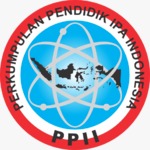Time Dilation in Interstellar Missions: A Systematic Literature Review on Relativistic Effects and Technological Solutions
DOI:
https://doi.org/10.29408/kpj.v9i2.30399Keywords:
Atomic Clock, Breakthrough stratshot, Interstellar mission, Time dilationAbstract
Interstellar exploration faces fundamental challenges due to the time dilation effects of Einstein's theory of relativity. This review presents a comprehensive analysis of the principle of time dilation, implications for interstellar missions, as well as cutting-edge technologies that utilize this principle. The Systematic Literature Review (SLR) method with PRISMA approach was applied, resulting in 42 relevant articles that met the inclusion criteria. The review results show that: (1) the effects of time dilation pose significant challenges in interstellar mission planning, particularly in the aspects of navigation, communication, and crew biology; (2) the development of cutting-edge technologies such as the Breakthrough Starshot relativistic vehicle, high-precision atomic clocks, and autonomous AI systems offer innovative solutions to overcome these challenges; (3) the integration of relativity understanding with these advanced technologies opens up new opportunities to realize interstellar exploration in the coming decades. These findings confirm that although time dilation is a major obstacle, the development of revolutionary technologies can turn it into a supporting factor in the realization of interstellar missions.
References
Arneth, Borros. 2024a. “A Novel Interpretation of the Results of the Hafele‐Keating Experiment.” Physics Essays 37(2): 150–52. https://doi.org/doi.org/10.4006/0836-1398-37.2.150
Arneth, Borros. 2024b. Hafele and Keating Revisited: A Novel Interpretation of the Results of the Hafele‐Keating Experiment. Physics Essays Publication. doi: https://doi.org/doi.org/10.4006/0836-1398-37.2.150
Arzoumanian, Z, S Bogdanov, James Cordes, Keith Gendreau, Dong Lai, J Lattimer, B Link, et al. 2009. “X-Ray Timing of Neutron Stars, Astrophysical Probes of Extreme Physics.”
Atwater, Harry A, Artur R Davoyan, Ognjen Ilic, Deep Jariwala, Michelle C Sherrott, Cora M Went, William S Whitney, and Joeson Wong. 2018. “Materials Challenges for the Starshot Lightsail.” Nature Materials 17(10): 861–67. doi:https://doi.org/doi.rg/10.1038/s41563-018-0075-8.
Bothwell, Tobias. 2024. “Prospective Optical Lattice Clocks in Neutral Atoms with Hyperfine Structure.” Atoms 12(3). doi: https://doi.org/ doi.rg/10.3390/atoms12030014.
Bruiger, Dan. 2024. “Light and the Cosmic Speed Limit.” (August). doi: https://doi.org/10.13140/RG.2.2.26649.63848.
Carson, Zack, and Kent Yagi. 2020. “Testing General Relativity with Gravitational Waves.” In Handbook of Gravitational Wave Astronomy, eds. Cosimo Bambi, Stavros Katsanevas, and Konstantinos D Kokkotas. Singapore: Springer Singapore, 1–33. doi: https://doi.org/10.1007/978-981-15-4702-7_41-1.
Casarsa, Massimo, Donatella Lucchesi, and Lorenzo Sestini. 2024. “Experimentation at a Muon Collider.” Annual Review of Nuclear and Particle Science: 233–61. doi: https://doi.org/10.1146/annurev-nucl-102622-011319.
Chien, Steve A. 2022. Formal Methods for Trusted Space Autonomy: Boon or Bane? . https://ai.jpl.nasa.gov.
Damasso, Mario, Fabio Del Sordo, Guillem Anglada-Escudé, Paolo Giacobbe, Alessandro Sozzetti, Alessandro Morbidelli, Grzegorz Pojmanski, et al. 2020. “A Low-Mass Planet Candidate Orbiting Proxima Centauri at a Distance of 1.5 AU.” Science Advances 6(3): 1–13. doi: https://doi.org/10.1126/sciadv.aax7467.
Davoyan, Artur R., Jeremy N. Munday, Nelson Tabiryan, Grover A. Swartzlander, and Les Johnson. 2021. “Photonic Materials for Interstellar Solar Sailing.” Optica 8(5): 722. doi: https://doi.org/10.1364/optica.417007.
Degnan, John J. 2008. “Laser Transponders for High-Accuracy Interplanetary Laser Ranging and Time Transfer.” In Lasers, Clocks and Drag-Free Control: Exploration of Relativistic Gravity in Space, eds.
Hansjorg Dittus, Claus Lammerzahl, and Slava G Turyshev. Berlin, Heidelberg: Springer Berlin Heidelberg, 231–42. doi: https://doi.org/10.1007/978-3-540-34377-6_11.
Doris, Lucas. 2025. “AI in Space Exploration: Autonomous Systems for Planetary Rovers and Satellite Data Analysis.”
Gianfelice, Eliana, and Wendt. “Introduction to Special Relativity. https://doi.org/doi.org/10.48550/arXiv.2108.10099.
Garcia, A. C. M., Schneiders, M., da Mota, K. S., da Conceição, V. M., & Kissane, D. W. (2023). Demoralization and spirituality in oncology: an integrative systematic review. Supportive Care in Cancer, 31(5). https://doi.org/doi.org/10.1007/s00520-023-07722-6
Heller, René, Michael Hippke, and Pierre Kervella. 2017. “Optimized Trajectories to the Nearest Stars Using Lightweight High-Velocity Photon Sails.” doi: https://doi.org/10.3847/1538-3881/aa813f.
Helvajian, Henry, Alan Rosenthal, John Poklemba, Thomas A. Battista, Marc D. DiPrinzio, Jon M. Neff, John P. McVey, Viktor T. Toth, and Slava G. Turyshev. 2023. “Mission Architecture to Reach and Operate at the Focal Region of the Solar Gravitational Lens.” Journal of Spacecraft and Rockets 60(3): 829–47. doi: https://doi.org/10.2514/1.A35493.
Jain, Rashika, Stefano Speretta, Dominic Dirkx, and Eberhard Gill. 2024. “Inter-Satellite Tracking Methods and Applications: A Comprehensive Survey.” Advances in Space Research 74(8): 3877–3901. doi: https://doi.org/doi.org/10.1016/j.asr.2024.08.022
Joseph, Capt, and H Cass Forrington. 2023. “General Relativity: Effects in Time as Causation.” (February).
Kotur, Bhargava R, and Adin Softlabs. “Special Relati Vity’ s Time Dilation Is Wrong No Time Dilation Due to Velocity.”: 1–38.
Long, K, Adam Crowl, Andreas Tziolas, and R.Freeland. 2012. “Project Icarus: Nuclear Fusion Space Propulsion & The Icarus Leviathan Concept.” Space Chronicles 65: 44.
Ludlow, Andrew D, Martin M Boyd, Jun Ye, E Peik, and P. O. Schmidt. 2015. “Optical Atomic Clocks.” Reviews of Modern Physics 87(2): 637–701. doi: https://doi.org/10.1103/RevModPhys.87.637.
Mamay, S H, E L Yochelson, and E Dorf. 1962. “72 Science Hafele Keating --- Around-the-World Atomic Clocks- Observed Relativistic Time Gains.” 177.
Masiero, A., P. Paradisi, and M. Passera. 2020. “New Physics at the MUonE Experiment at CERN.” Physical Review D 102(7): 75013. doi: https://doi.org/10.1103/PhysRevD.102.075013.
Milani, A, Giacomo Tommei, David Vokrouhlický, Emanuele Latorre, and S Cicalò. 2010. “Relativistic Models for the BepiColombo Radioscience Experiment.” In Proceedings of The International Astronomical Union. 356–65. doi: https://doi.org/10.1017/S1743921309990652.
Milani, A, David Vokroulicky, Daniela Villani, Claudio Bonanno, and Alessandro Rossi. 2002. “Testing General Relativity with the BepiColombo Radio Science Experiment.” Physical Review D 66. doi: https://doi.org/10.1103/PhysRevD.66.082001.
Neukart, Florian. 2024. “Toward the Stars: Technological, Ethical, and Sociopolitical Dimensions of Interstellar Exploration.” Space Policy (November): 101676. doi: https://doi.org/10.1016/j.spacepol.2024.101676.
Noer, Zikri. & Dayana. 2021. Buku Teori Relativitas. Guepedia.
Peretz, E., Mather, J. C., Hamilton, C., Pabarcius, L., Hall, K., Fugate, R. Q., Green, W. A., & Klupar, P. (2022). Orbiting laser configuration and sky coverage: coherent reference for Breakthrough Starshot ground-based laser array. Journal of Astronomical Telescopes, Instruments, and Systems, 8(01). https://doi.org/doi.org/10.1117/1.jatis.8.1.017004
Pokhrel, Sakinah. 2024. “No TitleΕΛΕΝΗ.” Αγαη 15(1): 37–48.
Reynolds, Christopher S. 2015. “Measuring Black Hole Spin Using X-Ray Reflection Spectroscopy.” In The Physics of Accretion onto Black Holes, eds. Maurizio Falanga, Tomaso Belloni, Piergiorgio Casella, Marat Gilfanov, Peter Jonker, and Andrew King. New York, NY: Springer New York, 277–94. doi: https://doi.org/10.1007/978-1-4939-2227-7_14.
Shah, Varun, and Danial Khan. 2024. “Next-Generation Space Exploration: AI-Enhanced Autonomous Navigation Systems”.
Shapiro, Irwin I. 1964. “Fourth Test of General Relativity.” Physical Review Letters 13(26): 789–91. https://doi.org/10.1103/PhysRevLett.13.789.
Stairs, Ingrid H. 2003. Testing General Relativity with Pulsar Timing Living Reviews in Relativity Article Amendments. https://www.livingreviews.org/lrr-2003-5/.
Stankovich, Sasha, Dmitriy A. Dikin, Geoffrey H.B. Dommett, Kevin M. Kohlhaas, Eric J. Zimney, Eric A. Stach, Richard D. Piner, Son Binh T. Nguyen, and Rodney S. Ruoff. 2006. “Graphene-Based Composite Materials.” Nature 442(7100): 282–86. doi: https://doi.org/10.1038/nature04969.
Stavinschi, Magda, Beatriz Garcia, and Andrea Sosa. 2018. “Tata Surya.” Jurnal Prodi Astronomi Bandung: 73.
Swanson, E., M. Fertl, A. Garcia, C. Helling, R. Ortez, R. Osofsky, D. A. Peterson, et al. 2025. “The Fixed Probe Storage Ring Magnetometer for the Muon G-2 Experiment at Fermi National Accelerator Laboratory.” Nuclear Instruments and Methods in Physics Research, Section A: Accelerators, Spectrometers, Detectors and Associated Equipment 1075(March): 170338. doi: https://doi.org/10.1016/j.nima.2025.170338.
Vijayan, Aditi, Bocheng Zhu, Miao Li, Feng Yuan, and Luis C Ho. 2023. “X-Ray Emission from the Interstellar and Circumgalactic Medium of Elliptical Galaxies Based on Macer Simulations.” Monthly Notices of the Royal Astronomical Society 524(3): 4642–52. doi: https://doi.org/10.1093/mnras/stad2107
Will, Clifford M. 2014. “The Confrontation between General Relativity and Experiment.” doi: https://doi.org/10.12942/lrr-2014-4.
Downloads
Published
Issue
Section
License
Copyright (c) 2025 Kappa Journal

This work is licensed under a Creative Commons Attribution-ShareAlike 4.0 International License.
Semua tulisan pada jurnal ini menjadi tanggungjawab penuh penulis. Jurnal Kappa memberikan akses terbuka terhadap siapapun agar informasi dan temuan pada artikel tersebut bermanfaat bagi semua orang. Jurnal Kappa dapat diakses dan diunduh secara gratis, tanpa dipungut biaya, sesuai dengan lisensi creative commons yang digunakan







